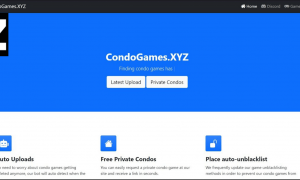In today’s dynamic work environment, consistent, transparent, and open communication from leadership is more critical than ever. When company-wide messages are shared regularly by senior leaders, they foster a culture of trust, direction, and unity. Employees need to feel connected to the company’s mission and goals, and leadership has the unique ability to nurture this connection through deliberate communication efforts.
Whether it’s a quarterly town hall, a weekly video message, or an internal email blast, regular communication from leadership can significantly impact company morale, alignment, and productivity. While it may be easy to overlook the importance of this type of communication, the benefits it brings to the organization can be profound.
1. Fosters Transparency and Trust
Transparency breeds trust, and when leadership consistently communicates information about the company’s direction, performance, or even challenges, it shows employees that they are valued stakeholders. This openness helps reduce speculation and uncertainty, making employees feel more secure and engaged in their roles.
If leadership only communicates during moments of crisis or change, employees may start to associate those communications with bad news. On the other hand, regular updates normalize communication and make leadership more approachable and relatable.

2. Aligns Everyone with Company Goals
One of the central objectives of communication from leadership is to ensure that everyone in the organization understands the broader vision and strategic goals. When employees understand the “why” behind what they’re doing, they are more likely to take ownership of their tasks and align their efforts with big-picture objectives.
Clarity of mission and goals drives better decision-making and minimizes wasted effort. Leaders who articulate goals consistently empower their teams to act with confidence in their day-to-day roles.
3. Boosts Employee Engagement
Engaged employees are more productive and committed to their work. When executives and managers share successes, recognize effort, and show appreciation for their teams, it contributes to a culture where individuals feel seen and heard.
Hearing directly from leadership — even in simple formats — reinforces the idea that employees are an essential part of the company’s journey. It motivates them to invest in their roles and contribute meaningfully to the company’s success.

4. Encourages Two-Way Communication
Regular company-wide communication also opens the door to feedback and dialogue. Smart leaders use communication channels not only to speak but also to listen. Including options for Q&A sessions during broadcasts or feedback boxes in digital platforms can help leadership identify concerns, gather ideas, and show empathy toward employees’ experiences.
This two-way bridge makes employees feel like active participants in shaping company processes and future plans.
5. Enhances Agility and Readiness for Change
In rapidly changing industries, agility is key. By providing timely updates and guidance, leadership can keep teams aligned and ready to shift priorities when needed. Sudden organizational changes are better managed when there’s a foundation of ongoing, transparent communication.
Because employees are already in the habit of receiving updates from leadership, they are less likely to feel blindsided when change does occur, making transitions smoother and less disruptive.
Conclusion
Regular, company-wide communication from leadership is far more than a routine — it’s a strategic tool that strengthens the company’s culture and operational alignment. Leaders who prioritize and maintain open lines of communication put their organizations in a better position to succeed, both in terms of employee satisfaction and business performance.
Frequently Asked Questions
-
Q: How often should leadership communicate with employees?
A: While the frequency may vary depending on the organization, many companies benefit from monthly updates, quarterly town halls, and weekly team-level communications. Consistency is more important than volume. -
Q: What types of content should leadership share?
A: Leaders can share updates on company performance, strategic goals, upcoming changes, employee recognition, customer success stories, and new initiatives. Transparency in both positive and challenging situations is key. -
Q: What format is most effective for company-wide communication?
A: A mix of formats works best, including emails, video messages, live virtual meetings, and internal newsletters. Utilizing multiple formats ensures that different communication preferences are accommodated. -
Q: How can leadership ensure communication is two-way?
A: Including live Q&A sessions, anonymous feedback forms, and regular surveys allows employees to respond and share ideas. Incorporating that feedback into future planning shows responsiveness.












